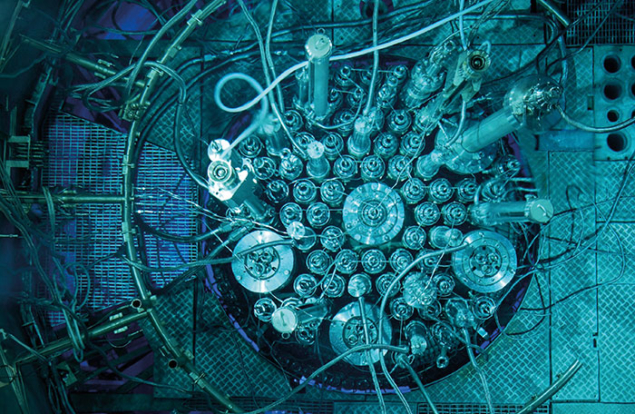
Nuclear reactors are usually thought of in the context of electricity generation, whereby heat generated by nuclear fission produces steam to drive an alternator. A less well-known class of nuclear-fission reactors fulfils an entirely different societal goal. Known as research and test reactors, the heat they produce is a by-product, while the neutrons resulting from the fission reactions are used to irradiate materials or as probes for materials science. In some reactors, neutrons are used to transmute stable isotopes into radioactive ones, which are subsequently utilised for industrial or medical purposes.
Used in diagnostics and treatment, medical radioisotopes are a vital tool in the arsenal of oncologists in detecting and fighting cancer. In the case of 99mTc, which is a daughter product of 99Mo, roughly 30 million patients per year are injected with this isotope. This accounts for 80% of all nuclear-medicine diagnostic procedures, and demand is only growing as more of the global population gain access to advanced medicine. Classically, 99Mo is produced as a fission product in uranium targets: after irradiation lasting around one week, the targets are rushed off to the processing facility where the 99Mo is extracted. Since its half-life is only around six days, there is no way to stock up on the isotope, and therefore a continuous chain of target production, irradiation, isotope extraction and purification – and finally supply to hospitals – is required.
The importance of a steady supply of medical radioisotopes such as 99Mo cannot be overestimated, yet it is generally not possible to cover the cost of operating a large research reactor or other facility solely for the production of radioisotopes, and the yield needs to be sufficiently high for such a production to even significantly reduce the cost. Traditionally, the economics of constructing an accelerator facility for the sole purpose of generating 99Mo have been challenging, especially since the fission yield of 99Mo outweighs the possible yields from non-reactor methods by at least a factor of 10. Recently, however, a reduction in the construction costs of high-power accelerators and the increasing costs associated with operating reactors has generated interest in accelerator-based production of 99Mo, for example via semi-commercial initiatives such as SHINE and NorthStar in the US.
One of the driving forces behind these developments is the ageing of existing research reactors. The global supply of 99Mo mainly originates in a handful of reactors such as the BR2 in Belgium, the NRU in Canada or the HFR in the Netherlands, and most of them are more than 50 years old. The NRU, which alone is responsible for about a third of the global demand of 99Mo, is scheduled to cease production this year. Some reactors are still planned to continue operation for multiple decades (such as OPAL in Australia, SAFARI in South Africa and BR2), while smaller research reactors such as MARIA in Poland and LVR-15 in the Czech Republic are getting increasingly involved in radioisotope production and new research reactors are being contemplated: MYRRHA in Belgium, PALLAS in the Netherlands and JHR in France (for which construction is ongoing), for instance. Despite these developments, it is uncertain if the rising demand can continue to be met without assistance from accelerator-based production.
Neutrons are very suitable for isotope production because the cross-sections for neutron-induced nuclear reactions are often much larger than those for charged particles. As such, there is an advantage in using the neutrons already available at research reactors for isotope production. But it is clear that accelerators and reactors are highly complementary. Reactors generate neutron-rich isotopes through fission or activation, whereas accelerators typically allow the production of proton-rich isotopes. Alpha emitters are also becoming more popular in nuclear medicine, particularly in palliative care, and the role of accelerators will likely become more important in the future production of such isotopes. It is therefore healthy to maintain multiple production routes open for such vital and rare products, on which people’s lives can depend.








